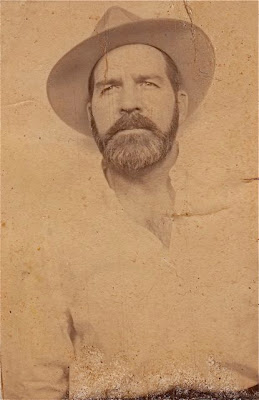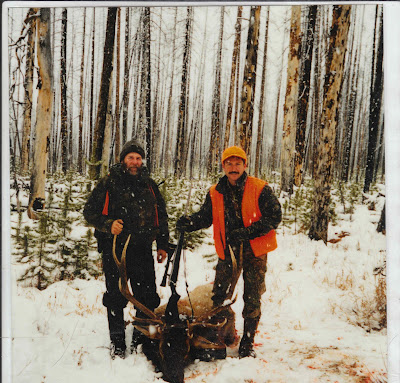When rose-colored sun kissed Sawtooth Mountain and began melting Sunday morning's frost, Montana's big game season was an hour old, and Augusta's checking station had been open for three hours.
During the morning hours, outbound hunters stopped at the station for coffee, hints on "good hunting areas," and to report their hunting status. The rest of the day, hunters refilled on coffee, checked in game, reported their status and marveled at the days photos posted on the wall.
The biggest marvel of the day was a black bear brought in about 6:30 p.m. the black bear, taken by Ryan Crawford of Helena, weighted 370 pounds. Crawford said that he shot the bear in the Skunk Creek drainage north of Roger's Pass.
Montana Fish, Wildlife and Parks game biologist Quentin Kujala said that Crawford's black bear had to be the most impressive animal of any species ever checked through the station. Kujala recorded the bear's length--from nose to tail--at 79 inches and its chest girth at 54 inches. None of the hunters in the crowd were 78 inches tall, 54 inches at the chest or weighed 370 pounds. Everyone got a chuckle when one of the hunters remarked, "That's probably the bear the guy from Lincoln was feeding dog food all summer."
After Crawford left to go home, but while the hunters and FWP personnel were still discussing the huge bar, wildlife veterinarian John Murnane stopped by the station with an antelope he had taken near Grass Range. Murnane works with the grizzly coordinating office of the Interagency Grizzly Study Team near Yellowstone Park.
Murnane said that the average weight of grizzly bears they capture was 350 pounds. As Murnane and Kujala chewed over the facts, they came to realize that the black bear was without the guts, and Murnane's grizzlies were live weight. Both experts believed that the live weight of the black bear was close to 500 pounds.
After the bear, the biggest sight was six pickup trucks that arrived about 1:30 p.m. About 15 hunters piled out of them. Most had blood on their hands, arms, boots and pants, and big smiles on their faces.
The trucks were loaded with nine elk--five bulls and four cows--all taken in Harrison Basin on the Krone ranch, south of Augusta. The bulls ranged in size from 3X3s up to a 6X6 taken by Shaylin Krone.
Matt Troy, a contractor from Fairfield, said that he was with his friend Brian Neckstad of Augusta when an elk ran toward both of them. Troy said, "Brian was quicker than I was, so he ended up with the elk. Troy said that all of the shooting at the Krone ranch was over in 30 minutes.

Fifteen minutes of activity by the checking station team had all the elk measured, tagged and recorded. As Kujala walked from the trucks, he said, "That's a lot of meat to have out in the sun."
Sunday had started with a hard frost, but by noon the temperature was over 70 degrees. The bright sun and balmy temperature brought comments from hunters that they should be fishing, swimming or sunbathing. When one hunter checked in at the end of the day, he said, "All we've got is a tan line from where the sling went over our shoulders."
Working in Sunday's sun at the checking station was Kujala, conservation aides Graham Frye, of Choteau, and Joan Hicks, of Augusta, and Game Warden Jason Snyder, of Great Falls. During one break in activity, Hicks said that the station goes from "busy to crocheting."
Total number of animals checked in the stop-and-go operation was: 15 elk, 15 mule deer, 11 whitetail deer and one black bear. Numbers for opening day in 2004 were: eight elk, 15 mule deer and 10 whitetail deer. There were 43 successful hunters and 108 unsuccessful hunters recorded this year. That compares with 33 successful hunters and 166 unsuccessful hunters in 2004.
Kujala said that with the nice weather and five weeks of hunting season ahead, most hunters are optimistic and very upbeat for a great season.










